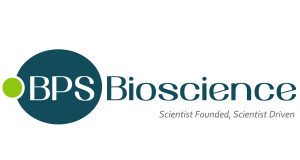PARP1 (Mouse), GST-Tag Recombinant
PARP1 (Mouse), GST-Tag Recombinant
SKU
BPS102596-3
Packaging Unit
1 mg
Manufacturer
BPS Bioscience
Availability:
loading...
Price is loading...
Products from BPS Bioscience require a minimum order value above 400€
Encompassing Amino Acids: 2-1014(end)
Application: Useful for the study of enzyme kinetics, screening inhibitors, and selectivity profiling.
Assay Conditions: Assay was done according to PARP1 Chemiluminescent Assay Kit (BPS Bioscience #80551) with various amounts of PARP1.
Background: PARP1, also known as poly-(ADP-ribose) polymerase 1 or NAD+ ADP-ribosyltransferase 1, is part of the PARP family, and it is the most abundant member. ADP ribosylation, which is the addition of an ADP-ribose to a protein, is a reversible post-translational modification of proteins mostly involved in the DNA Damage Response (DDR) pathway. Poly-ADP-ribosylation (termed PARylation) is the addition of linear or branched chains of ADP-ribose. PARP1 participates in DNA repair by non-homologous end joining (NHEJ), homologous recombination (HR), microhomology-mediated end-joining (MMEJ) and nucleotide excision repair. Dysfunction of DDR pathways can lead to oncogenesis. Overexpression of PARP1 has been found in breast and colon cancer, neuroblastoma, and others. This overexpression can lead to increasing MMEJ, an error-prone DNA repair mechanism, and genome instability leading to cancer. In addition to being involved in DDR, PARP1 is also linked to inflammation and type I diabetes. PARP1 inhibitors have been used in cancer treatment with success. In addition to reducing MMEJ, the use of PARP1 inhibitors can lead to synthetic lethality when homologous recombination repair (HRR) mechanisms are already defective, as in the case of BRCA1 (breast cancer susceptibility protein type 1) and BRCA2 deficient cells. Further understanding of the molecular pathways involving PARP1, and its contribution to disease, will continue to pave the way for new therapies for PARP1-linked diseases.
Concentration: PARP1 (GST-Th-2-1014(end))
Description: Recombinant mouse PARP1 (poly-(ADP-ribose) polymerase 1), full-length, encompassing amino acids 2-1014(end). This construct contains an N-terminal GST-tag followed by a Thrombin Cleavage Site. The recombinant protein was affinity purified.
Format: Aqueous buffer solution
Formulation: 40 mM Tris-HCl pH 8.0, 110 mM NaCl, 2.2 mM KCl, 20% glycerol, and 1 mM glutathione
Genbank: NM_007415.3
Purity: ≥85%
Storage Stability: At least 6 months at –80°C.
Tags: GST
Target: PARP1
Uniprot: P11103
Warnings: Avoid freeze/thaw cycles.
Biosafety Level: Not applicable (BSL-1)
Encompassing Amino Acids: 2-1014(end)
Application: Useful for the study of enzyme kinetics, screening inhibitors, and selectivity profiling.
Assay Conditions: Assay was done according to PARP1 Chemiluminescent Assay Kit (BPS Bioscience #80551) with various amounts of PARP1.
Background: PARP1, also known as poly-(ADP-ribose) polymerase 1 or NAD+ ADP-ribosyltransferase 1, is part of the PARP family, and it is the most abundant member. ADP ribosylation, which is the addition of an ADP-ribose to a protein, is a reversible post-translational modification of proteins mostly involved in the DNA Damage Response (DDR) pathway. Poly-ADP-ribosylation (termed PARylation) is the addition of linear or branched chains of ADP-ribose. PARP1 participates in DNA repair by non-homologous end joining (NHEJ), homologous recombination (HR), microhomology-mediated end-joining (MMEJ) and nucleotide excision repair. Dysfunction of DDR pathways can lead to oncogenesis. Overexpression of PARP1 has been found in breast and colon cancer, neuroblastoma, and others. This overexpression can lead to increasing MMEJ, an error-prone DNA repair mechanism, and genome instability leading to cancer. In addition to being involved in DDR, PARP1 is also linked to inflammation and type I diabetes. PARP1 inhibitors have been used in cancer treatment with success. In addition to reducing MMEJ, the use of PARP1 inhibitors can lead to synthetic lethality when homologous recombination repair (HRR) mechanisms are already defective, as in the case of BRCA1 (breast cancer susceptibility protein type 1) and BRCA2 deficient cells. Further understanding of the molecular pathways involving PARP1, and its contribution to disease, will continue to pave the way for new therapies for PARP1-linked diseases.
Concentration: PARP1 (GST-Th-2-1014(end))
Description: Recombinant mouse PARP1 (poly-(ADP-ribose) polymerase 1), full-length, encompassing amino acids 2-1014(end). This construct contains an N-terminal GST-tag followed by a Thrombin Cleavage Site. The recombinant protein was affinity purified.
Format: Aqueous buffer solution
Formulation: 40 mM Tris-HCl pH 8.0, 110 mM NaCl, 2.2 mM KCl, 20% glycerol, and 1 mM glutathione
Genbank: NM_007415.3
Purity: ≥85%
Storage Stability: At least 6 months at –80°C.
Tags: GST
Target: PARP1
Uniprot: P11103
Warnings: Avoid freeze/thaw cycles.
Biosafety Level: Not applicable (BSL-1)
| SKU | BPS102596-3 |
|---|---|
| Manufacturer | BPS Bioscience |
| Manufacturer SKU | 102596-3 |
| Package Unit | 1 mg |
| Quantity Unit | STK |
| Host | Human |
| Product information (PDF) | Download |
| MSDS (PDF) |
|

 Deutsch
Deutsch










